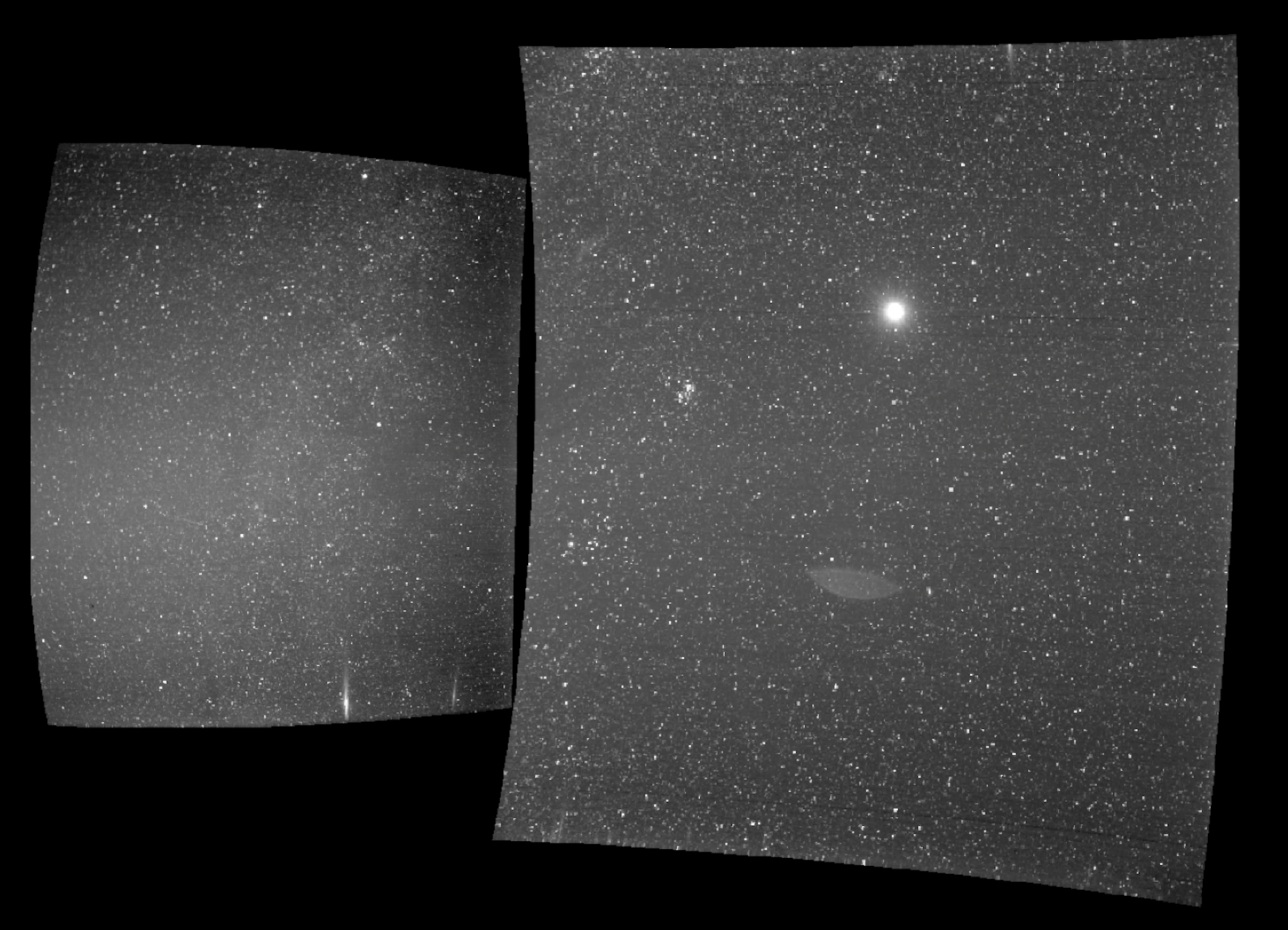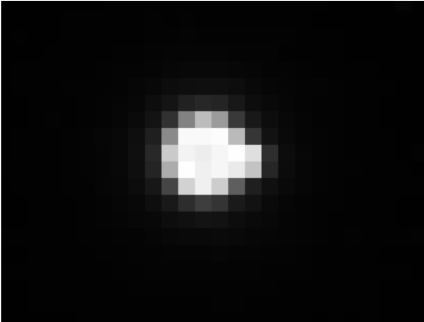Here's What Earth Looks Like When You're Heading to the Sun

NASA's Parker Solar Probe will never return to Earth — but it can still look back on where it came from.
On Sept. 25, the sole camera aboard that spacecraft, which launched on Aug. 12, captured a photo of Earth shining brightly in a field of stars. That camera is called WISPR (Wide-field Imager for Solar Probe) and is actually on board to allow the spacecraft to photograph the structure of the sun's upper atmosphere, the corona, as the spacecraft approaches — becoming the cosmic equivalent of a dashcam.
Earth is the bright spot near the center of the right-hand image. (The bow-shaped brightness below is just an artifact of how imaging technology designed to work inside the sun's atmosphere responds to an individual, particularly bright spot, according to a NASA statement.)

But there's another secret hidden in the image. The scientists behind the mission zoomed in on Earth and spotted a strange bulge on the right side of the planet in the image. But Earth isn't really misshapen: That lump happens to be the edge of the moon, visible from behind our planet.
When Parker Solar Probe captured this image, it was about 27 million miles away from Earth. Since then, it has continued its speedy journey toward the sun, thanks to a trajectory adjustment created by flying by Venus for the first of seven times.
The $1.5-billion spacecraft is beginning a seven-year mission to study the sun in greater detail than ever before, with scientists hoping that the project will help them understand the incredibly hot corona and how the solar wind, a river of charged particles that flows off the sun, is formed. The mission is due to complete its first solar flyby on Nov. 5.
Email Meghan Bartels at mbartels@space.com or follow her @meghanbartels. Follow us @Spacedotcom and Facebook. Original article on Space.com.
Get the Space.com Newsletter
Breaking space news, the latest updates on rocket launches, skywatching events and more!
Join our Space Forums to keep talking space on the latest missions, night sky and more! And if you have a news tip, correction or comment, let us know at: community@space.com.

Meghan is a senior writer at Space.com and has more than five years' experience as a science journalist based in New York City. She joined Space.com in July 2018, with previous writing published in outlets including Newsweek and Audubon. Meghan earned an MA in science journalism from New York University and a BA in classics from Georgetown University, and in her free time she enjoys reading and visiting museums. Follow her on Twitter at @meghanbartels.









